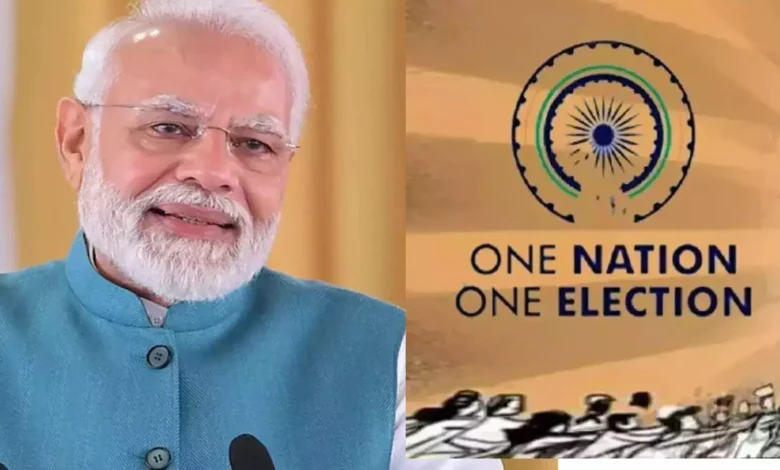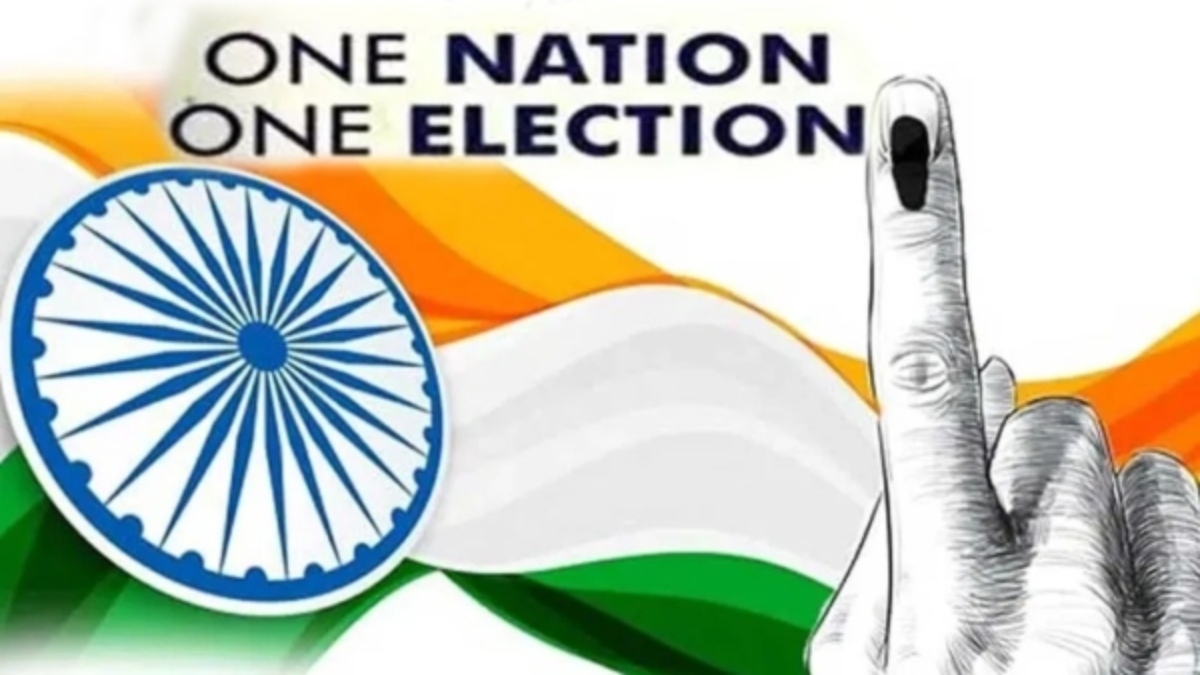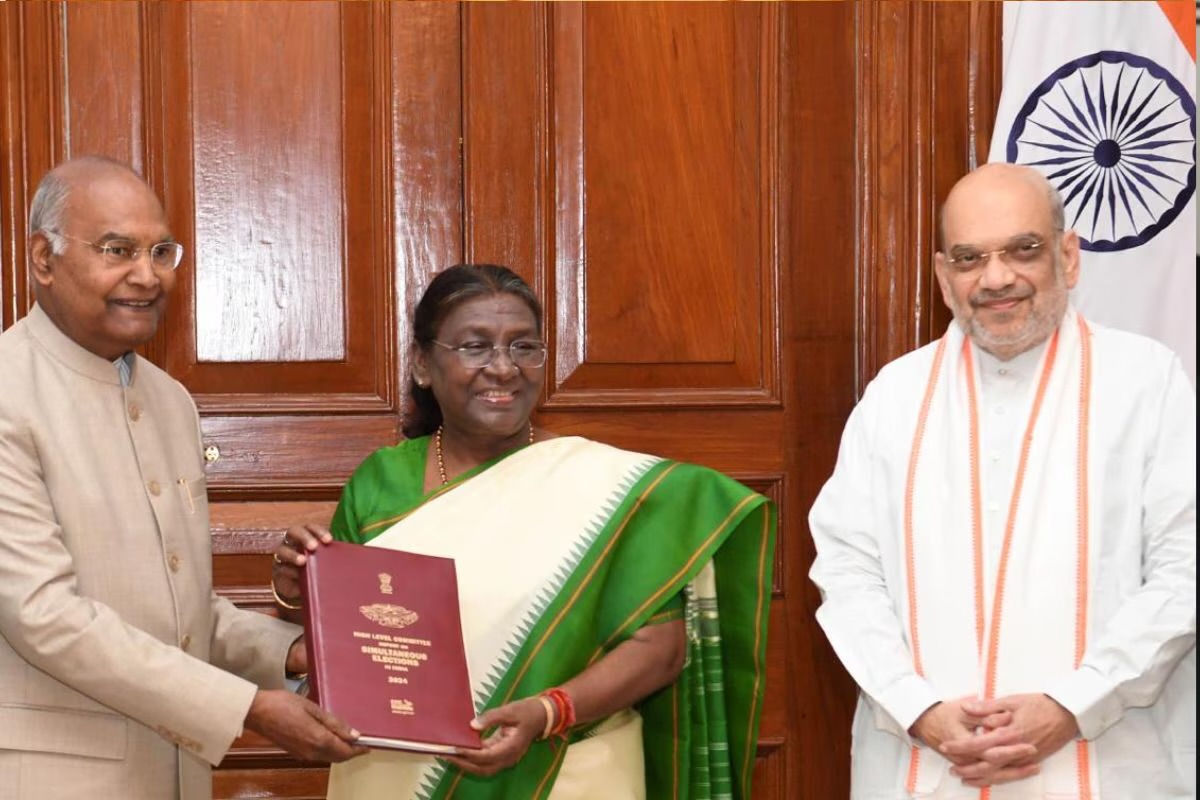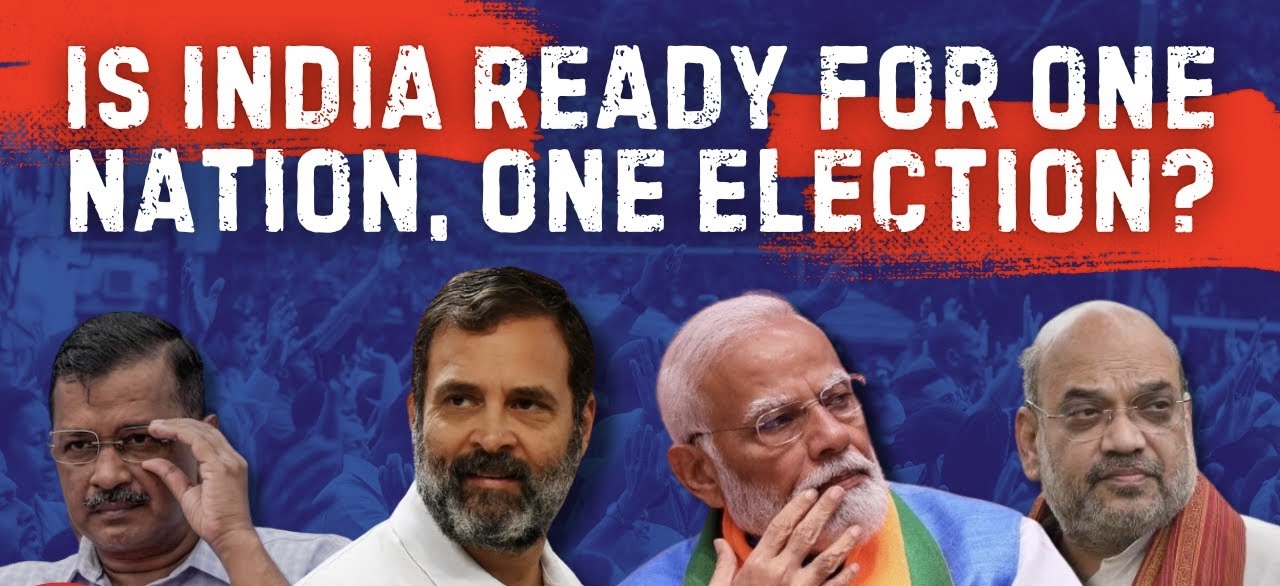Union Cabinet Approves’ One Nation, One Election’ Proposal. Will India’s Governance Stabilise Under This New Proposal?
On September 18, 2024, the cabinet, led by the Prime Minister of India, Mr Narendra Modi, took the historic decision of 'One Nation, One Election,' wherein a simultaneous election would be held for Lok Sabha or India's Lower House of Parliament and that of the state legislatures. It is a giant leap toward reform in election processes in India. Being the biggest democracy in the world, this brings hope to revolutionize the process of elections.

On September 18, 2024, in the very first historic decision, the Cabinet of the Union of India under Prime Minister Narendra Modi cleared the proposal for ‘One Nation, One Election‘ (ONOE). This is a landmark approval step to alter the face of electoral reforms in the world’s biggest democracy. This story may evolve into an elaborate feature of this proposal, with its logic, implications, and varied takes from the political circuit around it.
So, what is ‘One Nation, One Election’?
One Nation, One Election” will be a proposal for synchronizing the election cycles of Lok Sabha and State Legislative Assemblies. It prefers the national and the state government elections to coincide, that is, to be held once in five years. For two decades after independence, simultaneous elections were India’s rule of the day.
However, by the late 1960s, the practice was abandoned, given the premature dissolution of some state assemblies and even the Lok Sabha itself. It is more or less not the question of the infrequency of elections; instead, it is said to act as a mechanism to lighten the governance process, reduce administrative and financial burdens, and make the electoral system more efficient in India.
Historical Context of Simultaneous Elections in India
When India gained independence in 1947, the electoral system was designed to have simultaneous elections for the Lok Sabha and state assemblies. The pattern once more planned elections in 1951-52, 1957, 1962, and 1967. But almost in the late 1960s, the disintegration of many state assemblies before time, plus that of Lok Sabha itself in 1970, initiated staggered election scheduling that continues to date, where each one of the states and Lok Sabha will be scheduled to vote on different dates according to their respective schedules.
The Rationale Behind ‘One Nation, One Election’

The ONOE proposal has received strong support from several arguments that focus on the benefits of cost savings, governance stability, and administrative efficiency.
1. Cost Reduction
This is among the most compelling reasons for recommending simultaneous elections: saving some of the election expense for more crucial uses. Elections in India are expensive undertakings. Such events require huge allocations for security and infrastructure and the salaries paid to personnel deployed for elections. The entire expense of Lok Sabha polls alone is estimated to have gone beyond ₹60,000 crore in the last few elections. This money could be saved and diverted to more welfare schemes and public services if simultaneous elections happen.
2. Administrative Efficiency
The elections organised by the ECI are one tremendous logistical affair. The persistent election cycle requires the continuous mobilisation of millions of personnel, or what encompasses election officers, security forces, and administrative staff. Simultaneously, conducting all elections will hasten these aspects, and the ECI will be able to conduct elections efficiently and less disrupt all other governmental and administrative functions.
3. Governance Stability
The frequent elections disrupt governance because when the election models bring in the Model Code of Conduct, the implementation of the policies and the work initiated by the governments will be restricted. ONOE, therefore, intends to limit the frequent elections, allowing national and state governments not to get into mundane electoral campaigning and thereby focus on governance.
4. Voter Engagement
Concurrent elections would make voting more accessible for the citizens as a person would be required to go to the polling stations only once to cast their votes for national and state representatives. This would likely increase the percentage of voters and political activism as the electorates would be able to make more representative choices since all national and local candidates would be presented at one time.
The Ram Nath Kovind Committee and Its Recommendations

The Union Cabinet approved ONOE at the recommendations of a high-level committee headed by former President Ram Nath Kovind. It aimed to analyse the possibility of holding simultaneous elections and discuss such proposals with the related stakeholders, including political parties, specialists in law, and civil society organisations.
Some crucial suggestions by the committee
1. Lok Sabha and State Assembly Elections Simultaneously
Elections for Lok Sabha and all State Legislatures Simultaneously. All the states’ election cycles would be integrated with the national election schedule.
2. Elections at Local Levels
Besides national and state elections, the committee had suggested that local body elections, such as municipalities and panchayats, be held within 100 days after the general elections. This would help bring a streamlined electoral process from the grassroots to the higher rungs of government.
3. Common Electoral Roll
This should further be sub-fractured into local, state, national, and other classifications based on different levels of government. The committee proposed a single electoral roll for all elections, which should make registering voters simple enough and ensure uniformity across different electoral events.
4 Constitutional Amendments
To enact ONOE, there would have to be a few amendments to the Constitution. The amendments would be to make the terms of both Lok Sabha and state assemblies similar so that there would not be confusion and draft a set of orders or regulations to govern any early dissolution of either house.
Political Reactions and Debates

As the BJP has been one of the strongest supporters of this proposal, several opposition parties have raised their protests, stating that it ignores principles of federalism and democratic accountability and penalises regional demands.
ONOE Supporters- BJP
The BJP had been one of the strong proponents of the ONOE scheme. Prime Minister Narendra Modi and Home Minister Amit Shah argued that ONOE was necessary to ensure the effective and honest functioning of India’s democracy.
Amit Shah described ONOE as a step towards “clean and financially sound elections,” which would further strengthen the democratic framework of India.
Supporters also reveal the economic and administrative benefits of the policy. They posit that curtailment of the electoral cycle would allow governments more time to address governance and policy implementation without the pressures of election cycles. This, accordingly, would bring on a stable political setting and ensure prudent use of public financial resources.
Opposed to ONOE- Congress Party
The Congress Party is the most vociferous critic of the ONOE move, and no other political party made as much noise as the Congress Party on the issue. Congress President Mallikarjun Kharge has stated that it would run contrary to the democratic fiber of India because it would not be possible for elections to take place if governments lose their mandate or assemblies get dissolved before their time.
Members of the Congress party claim that elections have to occur when necessary because political sentiments among the people will likely change.
Regional and Small Parties
Several regional and smaller parties have come forward and stated that they are very concerned over the effects of ONOE on federalism and regional representation in parliaments. The Trinamool Congress (TMC) leaders, Samajwadi Party (SP), and All India Majlis-e-Ittehadul Muslimeen (AIMIM) leaders have opposed the proposal and suggested that simultaneous polls would sideline regional issues and states would lose control of their governments.
Critics also say that ONOE undermines India’s federal system as it centralizes power at the national government level. Critics also believe that if state and national elections are aligned, the polls would lose sight of local and regional issues and become rife with national narratives that negate the importance assigned to their corresponding structures of state governance and the voters’ ability to hold state governments accountable strains further.
Constitutional and Legal Challenges
The creation of ONOE would require significant amendments to the Constitution, particularly articles related to the term and dissolution of Lok Sabha and state assemblies.
Article 83 of the Constitution deals with the term of the Lok Sabha, and Article 172 with the term of state legislative assemblies. Thus, both the articles must be amended so that the Lok Sabha and the state assemblies’ terms are identical in nature. This could best be achieved by making the term of all the legislatures alike and establishing means to handle premature dissolution.
Dissolution of Assemblies
The problem of putting ONOE into practice emanates from the pre-term dissolution of state assemblies. In such a situation, simultaneous elections can become inconvenient. The Kovind committee has also formulated some proposals to overcome this difficulty and include temporary provisions for the temporary governing states till election time in the next cycle. Again, these would require careful consideration and constitutional sanctity so that they do not vitiate democratic accountability.
The Potential Consequences of ‘One Nation, One Election’
Simultaneous elections could drastically alter the nature of political campaigns in India. Political parties would be compelled to evolve a strategy for national and regional voters simultaneously and thus may give way to more integrated political platforms. However, national issues may become dominant in the agendas of politics, and issues of regions and localities may fade away.
Supporters of ONOE argue that through joint elections, voter turnout will be much higher since voters will go to the voting centres only once to vote for national and state representatives. Critics believe joint elections will overwhelm voters’ chances of focusing on pressing local issues in states with strong regional political identities.
One benefit of having ONOE is that there will be a higher chance of stable governance. This can concentrate the government’s attention on executing policies without the distraction brought about by the approach of elections. But, with the reduction in the number of elections, the mechanisms for accountability are potentially weakened and compromised. Without frequent elections, governments may lose responsiveness to the public’s needs and concerns.
Challenges and Opportunities
This is a considerable landmark for India’s electoral reforms as the ONOE proposal has secured Union cabinet approval. However, careful consideration will be required when implementing this proposal because it needs to consider all the constitutional, legal, and political issues it may raise. The recommendation of the Kovind committee will be a start for its roadmap, but it is essential to achieve consensus regarding the position of the political parties and stakeholders.
Therefore, The ONOE proposal could alter India’s electoral map. Whether it delivers all the promised benefits of cost savings, improved administrative efficiency, and governance stability is yet to be seen. Still, one thing is certain: the future contours of Indian democracy will be reshaped to look excellent for the nation and its citizens.




